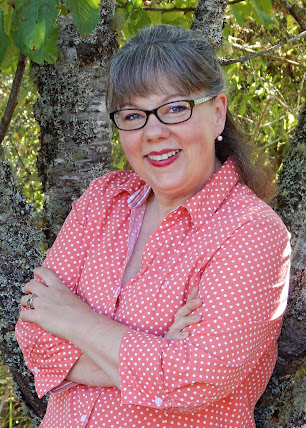 This post contains affiliate links. All opinions are my own. Please see FCC disclosure for full information.
This post contains affiliate links. All opinions are my own. Please see FCC disclosure for full information.Even though I don't have a garden right now, I'm still finding food to harvest from my yard. That's because God has provided us with a bounty of weeds that are good to eat - and most of them are "super food," packed with nutrients.
My season for eating fresh dandelion leaves is over because now the plants are blooming. (This makes the leaves awfully bitter - though there are ways around that. See my Ultimate Dandelion Cookbook for details.) Currently, we're eating the flowers. (Here's a favorite recipe.) Plantain is out and about, and is both good to eat and medicinal. Yellow dock is beginning to appear. Sow thistle, which is best when young, is cropping up. But lately, we've been focusing on cleavers (Galium aparine) - one of my children's favorites.
How to Identify Cleavers
 |
| Cleavers cling to nearly anything, including other plants. (Courtesy Hugo.arg and Wikimedia Commons.) |
In my yard, cleavers are among the easiest weeds to identify. Cleavers is a vining plant with long, thin leaves, and little bristles ("hooks" that bend toward the bottom of the plant) that tend to cling - or "cleave" - to just about anything it touches. (There's even a rumor that cleavers inspired the creation of Velcro.) The lowest leaves of the plant are petioled and rather round, whereas the upper leaves are sessile and shaped rather like narrow ovals. Cleaver plants can be 2 or 3 feet long when mature, and while they sometimes climb nearby plants or fences, they tend to grow horizontally across the ground.
Cleavers are also sometimes called clivers, goose grass (because geese love to eat them), catchweed, or sweet woodruff (the latter being it's own variety of cleavers that is medicinal, but toxic when consumed in large quantities). Cleavers grow throughout the United States, and through much of Canada and Mexico, as well as in many other parts of the world.
 |
| Cleaver leaves have distinctive, oval shape leaves that appear on the plant in a circular pattern. (This photo and title photo courtesy of Harry Rose.) |
What Do Cleavers Taste Like?
To me, cleavers taste like many other greens you are probably familiar with, like kale. They have a slightly bitter taste, much like some slightly bitter salad greens and not nearly as bitter as, say, dandelion leaves. Don't let that slight bitterness scare you, though. Even my children like to eat cleavers!
How to Eat Cleavers
Most often, my kids and I pick the young tips of cleavers and eat them raw. You'll see where the newest leaves grow in a cluster at the end of each vining end of the plant. Pinch these young leaves off and chew well before swallowing.
 |
| The newest leaves, or tips, of the cleaver are most edible. (Courtesy of Harry Rose.) |
But if you want to make absolutely sure cleavers stop clinging, you'll want to cook them. Pinch off the younger leaves and boil them for about 10 - 15 minutes. This will remove the clinging "hooks." After cooking, cleavers can be used like any green. For example, you can add them to omelets, rice, enchiladas, or smoothies.
As the plant ages, the leaves are less and less edible, becoming tough and more hairy. If there are buds or flowers on the plant, it's much too mature to eat.
I've also read that cleaver seeds - roasted at a low temperature - can be brewed into a caffeine-free coffee substitute. (Find complete directions here.)
Making Medicine with Cleavers
 |
| Courtesy NATT at NKM. |
Traditionally, cleaver leaves (old or young and dehydrated) were used to make a tea or tincture to treat kidney problems (including kidney stones), to help treat fever, and to act as a diuretic. They were also mashed up and applied to stings and bites. Most herbalists also believe cleavers improve the immune system and act as a cleansing tonic; cleavers may also act as a gentle sleep aid.
Mountain Rose Herbs says cleavers are good medicine for hypertension, psoriasis, eczema, and general skin care (including rashes). The plant's leaves also make a nice addition to hair rinses.
Many sources claim cleavers have been scientifically tested and found anti-bacterial and anti-fungal, too. First Ways also recommends clever tea for swollen lymph nodes.
You can read more about the medicinal properties of cleavers at The Homeopathic Information Service website.
CAUTIONS: Most herbalists recommend consuming only small amounts of cleavers, since it's considered strong medicine. People on blood pressure medication should not consume cleavers (since it the combo of cleavers and their prescription may lower their blood pressure more than is safe). Those on diuretics or kidney medication should consult a physician before consuming cleavers. In addition, pregnant women should avoid cleavers. Some people are allergic to cleavers and may get a rash (contact dermatitis) when they touch the plant; if this happens to you, do not under any circumstances eat cleavers. As with all new-to-you plants, when trying cleavers for the first time, it's a good idea to crush a few leaves and rub them over your skin. Wait 24 hours before consuming any cleavers. It's also smart to eat just a few leaves the first time you eat cleavers, or any other wild food. If you are allergic to plants in the Rubiaceae family, you should not consume cleavers.
You May Also Like:





No comments